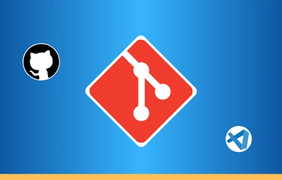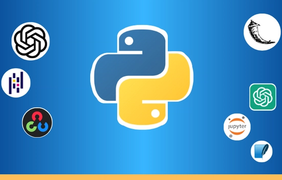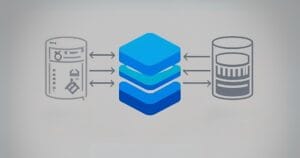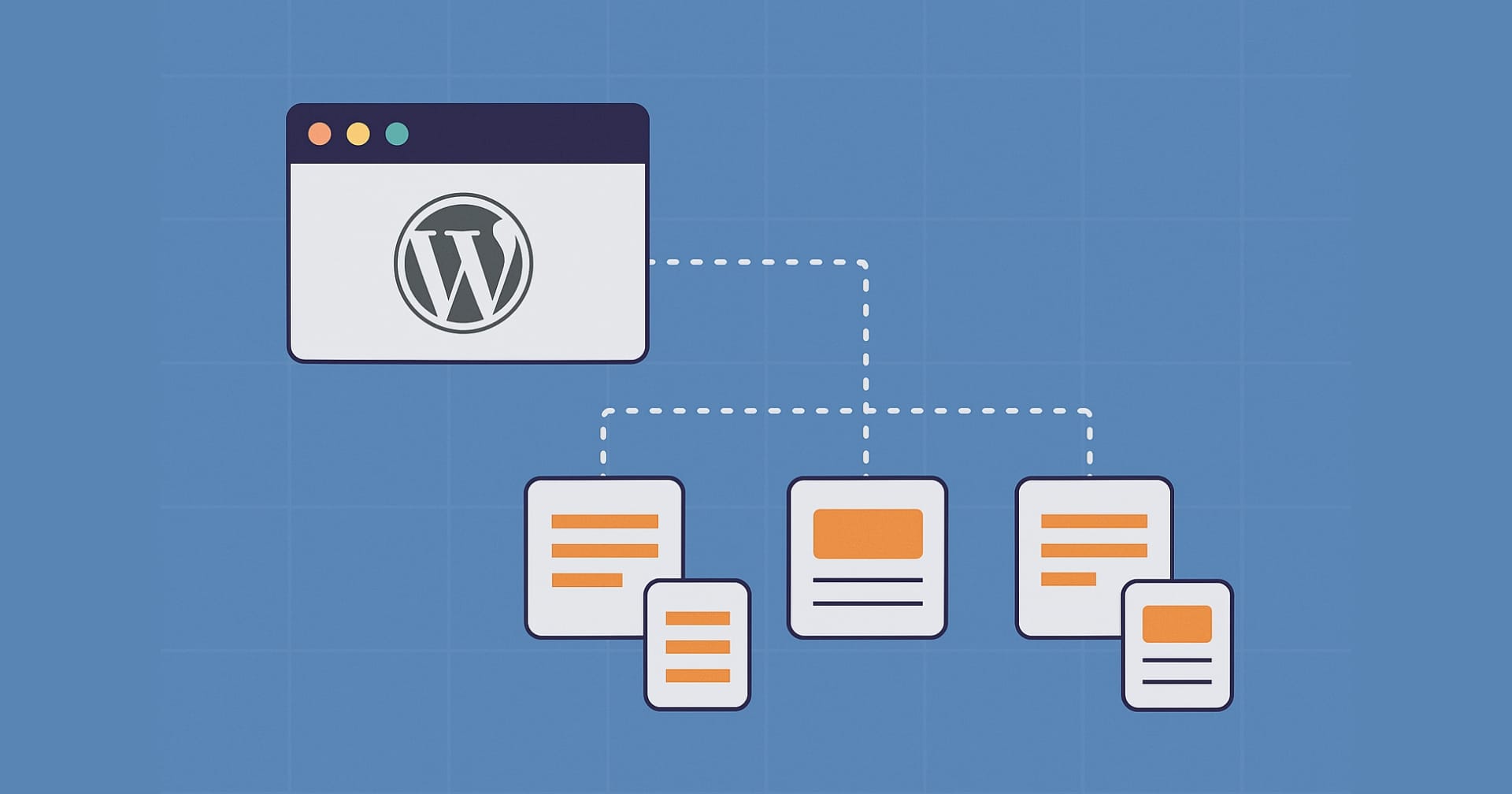Welcome to SitePoint!
Access a huge library of books and courses
On various topics: JavaScript, Python, AI, and more!
Use arrows to navigate
Browse our comprehensive collection of courses, books, and tutorials on a wide range of development and design topics.

video

video

video
·
★ 5.0
video

video

video
·
★ 4.5Browse our comprehensive collection of courses, books, and tutorials on a wide range of topics.
The home for developers



... I joined SitePoint to learn more about web stuff and their PHP/MySQL tutorial was probably the first I used.
Creator of WordPress, CEO of Automattic
Whether you’re a full-stack developer, designer, or looking to get into AI, we’ve got a path for you.

Learn JavaScript, the language of the web. Then deep dive into some popular frontend and backend JavaScript frameworks and start your Full Stack career the right way.

Learn JavaScript, the language of the web. Then deep dive into some popular frontend and backend JavaScript frameworks and start your Full Stack career the right way.

Learn JavaScript, the language of the web. Then deep dive into some popular frontend and backend JavaScript frameworks and start your Full Stack career the right way.

Learn JavaScript, the language of the web. Then deep dive into some popular frontend and backend JavaScript frameworks and start your Full Stack career the right way.

Learn JavaScript, the language of the web. Then deep dive into some popular frontend and backend JavaScript frameworks and start your Full Stack career the right way.

Learn JavaScript, the language of the web. Then deep dive into some popular frontend and backend JavaScript frameworks and start your Full Stack career the right way.
Discover our library filled with learning paths for all kinds of learners.
Browse thousands of jobs in Software Development
1d ago
<p><b>OT Network Architect, Peachtree City, Georgia</b></p><p>When you join our team as a <b>OT Network Architect</b>, you will design, implement, and secure Operational Technology (OT) networks for industrial environments. This role requires strong collaboration with IT, engineering, and operations teams to ensure secure, reliable, and high-performing OT network infrastructures.</p><h3>What You’ll Do</h3><ol> <li>Design and implement OT network architectures aligned with industry best practices, NIST, IEC 62443, and business objectives.</li> <li>Develop Network Architecture Design Documents and maintain Network & Hardware Standards.</li> <li>Establish Network & Hardware Design Principles for scalability, performance, and security.</li> <li>Define Network and Hardware Redundancy & Failover Strategies to ensure high availability.</li> <li>Create Network and Hardware Data Flow Diagrams for system interactions.</li> <li>Develop network segmentation strategies, ensuring separation between IT and OT environments while maintaining secure connectivity.</li> <li>Assess and mitigate cybersecurity risks by implementing access controls, anomaly detection, and monitoring solutions.</li> <li>Configure and optimize firewalls, routers, switches, VLANs, industrial DMZs, and VPNs for secure communication.</li> <li>Develop and enforce network policies, security standards, and compliance guidelines specific to OT environments.</li> <li>Conduct Network Traffic Analysis Reports to identify and address performance bottlenecks.</li> <li>Perform Evaluation of Site Loading to assess network scalability and capacity planning.</li> <li>Monitor network health and maintain Lifecycle Operations & Maintenance (LOM) and Level of Service (LOS) Reports.</li> <li>Support disaster recovery and business continuity planning for OT networks.</li> <li>Conduct Network and Hardware Vendor Evaluations and recommend solutions based on performance and security requirements.</li> <li>Develop and maintain an Inventory of network and hardware assets to support lifecycle management.</li> <li>Work with vendors and system integrators to ensure seamless deployment of network solutions.</li> <li>Develop and deliver a Network and Hardware Training Plan for OT personnel and engineers.</li> <li>Maintain up-to-date network documentation, topology diagrams, and security policies.</li> </ol><h3>What You Offer</h3><ol> <li>Bachelor’s degree in Computer Science, Network Engineering, Cybersecurity, or a related field.</li> <li>10+ years of experience in network architecture, industrial networking, or OT cybersecurity.</li> <li>Strong knowledge of OT/ICS protocols such as Modbus, DNP3, OPC-UA, PROFINET, and BACnet.</li> <li>Experience designing and securing SCADA, DCS, PLC, and IIoT environments.</li> <li>Hands-on experience with Cisco, Palo Alto, Fortinet, or equivalent networking/security devices.</li> <li>Expertise in firewall configuration, network segmentation, and zero-trust security principles.</li> <li>Familiarity with NIST CSF, IEC 62443, ISA/IEC 99 cybersecurity frameworks.</li> <li>Proficiency in VPNs, VLANs, IDS/IPS, NAC, and secure remote access solutions.</li> <li>Experience in oil & gas, utilities, manufacturing, or critical infrastructure industries.</li> <li>Background in network traffic analysis, intrusion detection/prevention.</li> <li>Strong analytical, troubleshooting, and problem-solving skills.</li> <li>Excellent written and verbal communication skills to collaborate with cross-functional teams.</li> </ol><h3>Who We Are</h3><p>Interfor is a growth-oriented forest products company, operating in all major forest products markets across North America. We offer one of the most diverse lines of wood products to customers around the globe, produced in safety-focused, world-class facilities. We strengthen and contribute to the local economies, build value for our employees and customers, and operate with world-leading sustainable forest management practices. We are proud to produce sustainable building materials that contribute to a healthy and sustainable future. Check out <a href="#">www.interfor.com</a> to learn more about our approach to sustainability.</p><p><b>Interfor is one of the largest forest products companies in the world and we’re growing in exciting directions. Come be a part of our success! #StartHereGoFar</b></p><h3>What We Offer</h3><p>Interfor builds value for our employees by providing a career where they can contribute, grow, and prosper. We offer a competitive salary, based both on what you bring to the role and benchmarked to market conditions. You’ll also get a competitive benefits package including:</p><ul> <li>Group Benefit Programs (Employee Medical, Dental, Vision Plans)<ul> <li>Short Term Disability Insurance</li> <li>Long Term Disability Insurance</li> <li>Life and AD&D Insurance</li> <li>Additional (Employee Paid) Life Insurance</li> </ul> </li> <li>HSA Medical Plan with Employer Match</li> <li>Supplemental Insurance (Accident, Hospital & Critical Illness)</li> <li>401(k) Matching Plan</li> <li>Participation in our Employee Share Purchase Plan (ESPP)</li> <li>Paid Vacation</li> <li>Employee Assistance Program</li> </ul><p>We want you to grow your career with Interfor. With our industry leading training programs and track record of promoting from within, you’ll have plenty of opportunities to ‘Start Here. Go Far.’ Check out our Employee Development Programs to learn more at <a href="#">www.interfor.com/careers</a>.</p><p><i>We appreciate the interest of all applicants, however, only those selected for an interview will be contacted. All applicants offered a position must successfully complete a pre-employment drug test and background check. Interfor is an Equal Opportunity Employer building a capable, committed, diverse workforce. All qualified applicants will receive consideration for employment without regard to race, color, religion, sex, sexual identity, gender, national origin, protected veteran status, or disability.</i></p> #J-18808-Ljbffr
1d ago
<p>OneMain Financial (OMF) is seeking a Lead Software Engineer to support products and programs to expand capabilities within leveraging data-driven strategies to support credit decisioning services and data pipelines for analytics. Responsibilities include supporting the architecture for a data-driven organization and overseeing the build and operation of capabilities necessary for full lifecycle data management, governance, provisioning, modeling, science, and analytics. The Lead Software Engineer is a leading voice for enabling data-driven decisioning deeply into OMF products and business processes. The Lead Software Engineer engages within a team of data subject matter experts, covering the range of data-centric domains, building, governing, and operating data platforms, as well as providing embedded data professionals in product delivery teams. With OMF having both on-premise and cloud-based operations, the Lead Software Engineer balances a strategy which leverages both while driving toward a cloud-first strategy, performing legacy data transformation where necessary. This role is a mentor to other developers, and responsible for guiding and directing day to day activities within a sprint, and ensuring standards and processes are followed across all projects.</p><p><b>RESPONSIBILITIES AND DUTIES:</b></p><ul> <li>Set and maintain design guidelines / principles, along with enforcing controls preferably through automation.</li> <li>Design, develop, and model execution platform using AWS Services and open source components.</li> <li>Deploy and migrate developed workflows across different environments.</li> <li>Modify and optimize existing decisioning processes.</li> <li>Integrate Decisioning platform with other systems and components.</li> <li>Facilitate engaging collaboration with cross-functional technology SMEs to design scalable, reliable, resilient, maintainable technical solutions.</li> <li>Establish and execute appropriate testing within Credit Decisioning platforms to enable earlier and more frequent testing.</li> <li>Lead the development of technically complex and highly integrated functionality, including coaching and guiding developers during development cycles, to ensure requirements are being met within defined timelines.</li> <li>Partner with Product Management to ensure design, engineering and implementation meets business needs.</li> <li>Utilize and drive continued adoption of engineering best practices using modern SDLC that enables CI/CD and favors automation, auditability, automated testing, and cloud native architectures.</li> <li>Think creatively and insist on continuous improvement; generate new ideas and approaches to implement the ideas.</li> <li>Use metrics to drive continuous improvements in quality, efficiency, and speed.</li> </ul><p><b>QUALIFICATIONS AND EXPERIENCE:</b></p><ul> <li>Active learner with initiative to drive continuous improvement is a must.</li> <li>Ability to create and foster relationships within a team-oriented, collaborative environment.</li> <li>BA/BS degree in computer science, mathematics, engineering, or related field or 7+ years of professional software engineering experience.</li> <li>Direct, hands-on experience and significant professional experience with one or more programming languages such as but not limited to: Python, Typescript, Scala, SQL.</li> <li>5 years of hands-on cloud computing experience in AWS. Deep functional experience with EKS, Aurora, MSK, DBT, Airflow, and Flink is a strong plus.</li> <li>In-depth RDBMS development experience (e.g., PostgreSQL, MySQL, Aurora).</li> <li>Experienced in designing, implementing and CI/CD pipelines and Infrastructure-as-Code.</li> <li>Experience with automated delivery pipelines, agile delivery, and test-driven development.</li> <li>Familiarity with a variety of programming styles (e.g., OO, functional) and in-depth knowledge of software design patterns is a strong plus.</li> <li>3+ years SCRUM/Agile/iterative methods.</li> <li>Experience with API and integration frameworks and patterns (e.g., GraphQL, gRPC, Kakfa, etc.) is a strong plus.</li> <li>Passion for producing clean, error-free code and proactively identifying potential issues.</li> <li>Outstanding problem identification, analysis and solving skills with a bias for action.</li> <li>A proponent of strong collaborative software engineering techniques and methods: agile development, design and code reviews, test-driven development, and related approaches.</li> <li>Good communication skills with both technical and non-technical team members.</li> <li>Experience mentoring junior developers.</li> <li>Passion for continuous learning and continuous improvement is a must.</li> <li>Excellent Communication Skills.</li> <li>Self-motivated and directed, with keen attention to detail.</li> </ul> #J-18808-Ljbffr
1d ago
<div> <p>Kaseya is the leading provider of complete IT infrastructure and security management solutions for Managed Service Providers (MSPs) and internal IT organizations worldwide powered by AI. Kaseya’s best-in-breed technologies allow organizations to efficiently manage and secure IT to drive sustained business success. Kaseya has achieved sustained, strong double-digit growth over the past several years and is backed by Insight Venture Partners <a href="#">www.insightpartners.com</a>, a leading global private equity firm investing in high-growth technology and software companies that drive transformative change in the industries they serve.</p> <p>Founded in 2000, Kaseya currently serves customers in over 20 countries across a wide variety of industries and manages over 15 million endpoints worldwide. To learn more about our company and our award-winning solutions, go to <a href="#">www.Kaseya.com</a> and for more information on Kaseya’s culture, please click here: <a href="#">Kaseya Culture</a>.</p> <p>Kaseya is not your typical company. We are not afraid to tell you exactly who we are and our expectations. We have achieved record levels of success being BOLD, being GRITTY, being ACCOUNTABLE. The thousands of people that succeed at Kaseya are prepared to go above and beyond for the betterment of our customers, and the betterment of their careers and long-term financial wealth.</p> </div><p><strong>WHAT WE ARE LOOKING FOR:</strong><br>As a Senior Network Engineer, you'll be instrumental in designing, implementing, and maintaining our network infrastructure. Your role involves analyzing network requirements, troubleshooting complex issues, and optimizing network performance. With a focus on scalability and security, you'll collaborate with cross-functional teams to ensure our network meets the evolving needs of our organization. If you're a seasoned network professional with a passion for innovation and problem-solving, apply now to join our team and drive excellence in network engineering.</p><p><strong>WHAT YOU’LL DO:</strong><br>A Senior Network Engineer will be expected to take ownership of and troubleshoot highly technical issues in a logical manner to reach a final resolution. They should recommend solutions to solve these issues and work closely with other team members to meet common objectives. This engineer should have a good base understanding of BGP and other datacenter technologies. They should also be eager to learn and work on new hardware and technologies. They should be very self-motivated and be able to succeed with minimal day-to-day supervision. This engineer should be respectful and courteous to all other departments. Previous data-center networking experience is required. Previous experience with next-generation firewalling and network security technologies is also a requirement.</p><p><strong>ESSENTIAL DUTIES AND RESPONSIBILITIES:</strong></p><ul> <li>Designing and implementing complex network solutions to meet business requirements.</li> <li>Managing and maintaining network infrastructure, including routers, switches, firewalls, and load balancers.</li> <li>Troubleshooting network issues and providing timely resolution to ensure minimal downtime.</li> <li>Monitoring network performance and security, implementing necessary improvements and optimizations.</li> <li>Collaborating with cross-functional teams to plan and execute network upgrades and expansions.</li> <li>Documenting network configurations, procedures, and best practices.</li> <li>Mentoring junior network engineers and providing technical guidance and support.</li> <li>Staying updated on emerging networking technologies and industry trends to drive innovation and improvement.</li> </ul><p><strong>WHAT YOU’LL BRING:</strong></p><ul> <li>Highly skilled in troubleshooting techniques.</li> <li>5+ years of work experience as a network engineer preferably backed by current Cisco CCNP certifications and Palo Alto Experience.</li> <li>The ideal candidate should be calm under pressure, a team player, flexible, and customer-focused.</li> <li>Excellent written, oral and interpersonal communication skills.</li> <li>Hands-on working experience in a multi-vendor environment including; Cisco Nexus, ASAs, and Palo Alto devices.</li> <li>The candidate would have some experience with Linux.</li> <li>Detailed security experience with ACLs, IPsec, SSL, traffic inspection, and DDoS mitigation techniques.</li> <li>A working understanding of networking technologies such as BGP, EVPN, VXLAN, MSTP, HSRP, BFD, 802.3ad, OSPF, route reflectors, confederations, FIB/RIB, distributed forwarding, AAA, layer 2 switching, and IPv6.</li> <li>A strong working knowledge of next-generation firewalls, deployment strategies, and network security best practices.</li> <li>Experience with peering from on-prem networking to public cloud providers.</li> <li>Strong experience with scripting languages like Python, Ansible, and shell scripting.</li> </ul><div> <p>Join the Kaseya growth rocket ship and see how we are #ChangingLives!</p> <p><strong>Additional information</strong><br><em>Kaseya provides equal employment opportunity to all employees and applicants without regard to race, religion, age, ancestry, gender, sex, sexual orientation, national origin, citizenship status, physical or mental disability, veteran status, marital status, or any other characteristic protected by applicable law.</em></p> </div> #J-18808-Ljbffr
1d ago
<h3>Target Digital Network Analyst (TDNA)</h3><h3>LOCATION</h3><p>Annapolis Junction, MD 20701</p><h3>CLEARANCE</h3><p>TS/SCI CI Poly (Please note this position requires full U.S. Citizenship)</p><h3>KEY SUMMARY</h3><p>We are seeking a skilled and detail-oriented Target Digital Network Analyst (TDNA) to join our innovative team. In this role, you will analyze and exploit digital networks to uncover actionable intelligence and support critical decision-making processes. Leveraging advanced tools and techniques, you will identify vulnerabilities, track network activity, and collaborate with multidisciplinary teams to address complex challenges. If you are passionate about network analysis, problem-solving, and contributing to mission-driven objectives, we invite you to apply and be a part of our dynamic and forward-thinking organization.</p><h3>POSITION RESPONSIBILITIES</h3><ul> <li>Analyze digital network activity to identify targets</li> <li>Develop actionable intelligence from network analysis</li> <li>Conduct vulnerability assessments of digital networks</li> <li>Collaborate with teams to support mission objectives</li> <li>Maintain and optimize network analysis tools</li> <li>Generate detailed reports and documentation of findings</li> </ul><h3>REQUIRED SKILLS</h3><ul> <li>Strong analytical and problem-solving abilities</li> <li>Proficiency in network analysis tools and techniques</li> <li>Understanding of digital network protocols</li> <li>Ability to interpret and exploit complex datasets</li> <li>Experience with log and event analysis</li> <li>Strong communication and documentation skills</li> </ul><h3>DESIRED SKILLS</h3><ul> <li>Familiarity with advanced persistent threat (APT) analysis</li> <li>Knowledge of cryptographic and encryption techniques</li> <li>Experience with penetration testing tools</li> <li>Understanding of malware and exploit methodologies</li> <li>Background in cybersecurity frameworks and compliance</li> <li>Exposure to operational security principles</li> </ul><h3>HOW TO APPLY</h3><p>Email us at <a href="#">jobs@cymertek.com</a> or apply today: <a href="#">www.cymertek.com</a></p><h3>EQUAL OPPORTUNITY EMPLOYER STATEMENT</h3><p>Cymertek is proud to be an Equal Opportunity Employer committed to fostering an inclusive and diverse workplace. We embrace and celebrate differences in our employees, recognizing that a diverse workforce enhances our creativity, innovation, and overall success. At Cymertek, employment decisions are made based on merit, qualifications, and business needs without regard to race, color, religion, sex, sexual orientation, gender identity, national origin, age, disability, veteran status, or any other characteristic protected by applicable laws. We believe in creating an environment where all individuals are treated with respect and dignity, and where opportunities for professional growth and advancement are accessible to everyone, regardless of background or identity.</p> #J-18808-Ljbffr
1d ago
<p><b>Our Company</b></p><p>Changing the world through digital experiences is what Adobe’s all about. We give everyone—from emerging artists to global brands—everything they need to design and deliver exceptional digital experiences! We’re passionate about empowering people to create beautiful and powerful images, videos, and apps, and transform how companies interact with customers across every screen.</p><p>We’re on a mission to hire the very best and are committed to creating exceptional employee experiences where everyone is respected and has access to equal opportunity. We realize that new ideas can come from everywhere in the organization, and we know the next big idea could be yours!</p><p>At Adobe, you will be immersed in an exceptional work environment that is recognized around the world. You will also be surrounded by colleagues who are committed to helping each other grow through our unique Check-In approach where ongoing feedback flows freely. If you’re looking to make an impact, Adobe's the place for you. Discover what our employees are saying about their career experiences on the Adobe Life blog and explore the meaningful benefits we offer.</p><p>Adobe is an equal opportunity employer. We hire hardworking individuals, regardless of gender, race, ethnicity, ancestry, age, disability, sexual orientation, gender identity or expression, veteran status, cultural background or religious beliefs. We know that when our employees feel appreciated and included, they can be more creative, innovative and successful. This is what it means to be Adobe For All.</p><p>Adobe is changing the world through digital experiences. Our digital media and digital marketing solutions empower businesses to make, manage, measure, and monetize content. We are aggressively innovating to enrich content creation and to reinvent how companies interact with their customers across every digital channel. Just look around you, our impact can be seen on virtually every screen, from TV and movies to digital magazines, to websites and mobile devices.</p><p><b>The Opportunity</b></p><p>At Document Cloud mobile group, we are looking for passionate and exceptional individuals to join our San Jose office, and are ready to pick up new challenges in the mobile landscape!</p><p>We provide solutions in the digital document space which touch the lives of millions of users across the world by improving their digital workflows. This is a middle level engineering position which involves working in a collaborative environment with partners across different geographies. The mobile organization is part of the larger Document Cloud, an integrated environment for working with documents across desktop, mobile, and web.</p><p>A successful candidate will become a key contributor on a team with high technical standards, ability to provide creative solutions and attention to detail, with tremendous opportunity for ownership and influence on product and technical direction. Candidates should be “owners”, with a strong interest in solving business as well as technical problems.</p><p><b>Responsibilities</b></p><ol> <li>Be part of a dynamic and synergetic team, working on designing and developing new features for iOS application.</li> <li>Develop and deliver user interface and application components for Document Cloud mobile applications.</li> <li>Implement automated tests for continued verification of application functionality.</li> <li>Engage directly with users to triage problems and understand issues they may be experiencing.</li> <li>Collaborate with product, design, and other developers to build features which enrich the documents ecosystem.</li> </ol><p><b>What you need to succeed</b></p><ul> <li>BS or MS in Computer Science or equivalent</li> <li>Minimum of 7 years relevant experience in software engineering, including experience developing, shipping, and maintaining mobile applications</li> <li>Strong technical background and analytical abilities in software design, implementation, and troubleshooting</li> <li>Knowledge and experience in iOS development, plus experience coding in Objective-C or Swift</li> <li>Knowledge and experience of working on C++ would be a bonus</li> <li>Problem solving attitude with a sharp focus on customer delight</li> <li>Ability to work efficiently and independently</li> <li>Excellent written and verbal communication skills</li> <li>Ability to share your opinions and proactively partner with all functions</li> </ul><p>Our compensation reflects the cost of labor across several U.S. geographic markets, and we pay differently based on those defined markets. The U.S. pay range for this position is $133,900 -- $242,000 annually. Pay within this range varies by work location and may also depend on job-related knowledge, skills, and experience. Your recruiter can share more about the specific salary range for the job location during the hiring process.</p><p>At Adobe, for sales roles starting salaries are expressed as total target compensation (TTC = base + commission), and short-term incentives are in the form of sales commission plans. Non-sales roles starting salaries are expressed as base salary and short-term incentives are in the form of the Annual Incentive Plan (AIP).</p><p>In addition, certain roles may be eligible for long-term incentives in the form of a new hire equity award.</p><p><b>State-Specific Notices:</b></p><p><b>California:</b></p><p><b>Fair Chance Ordinances</b></p><p>Adobe will consider qualified applicants with arrest or conviction records for employment in accordance with state and local laws and “fair chance” ordinances.</p><p><b>Colorado:</b></p><p><b><span>Application Window Notice</span></b></p><p>If this role is open to hiring in Colorado (as listed on the job posting), the application window will remain open until at least the date and time stated above in Pacific Time, in compliance with Colorado pay transparency regulations. If this role does not have Colorado listed as a hiring location, no specific application window applies, and the posting may close at any time based on hiring needs.</p><p><b>Massachusetts:</b></p><p><b>Massachusetts Legal Notice</b></p><p>It is unlawful in Massachusetts to require or administer a lie detector test as a condition of employment or continued employment. An employer who violates this law shall be subject to criminal penalties and civil liability.</p><p>Adobe is proud to be an</p><p><a href="#">Equal Employment Opportunity</a></p><p>employer. We do not discriminate based on gender, race or color, ethnicity or national origin, age, disability, religion, sexual orientation, gender identity or expression, veteran status, or any other applicable characteristics protected by law.</p><p>Learn more.</p><p>Adobe aims to make Adobe.com accessible to any and all users. If you have a disability or special need that requires accommodation to navigate our website or complete the application process, email</p><p><a href="#">accommodations@adobe.com</a></p><p>or call (408) 536-3015.</p> #J-18808-Ljbffr
1d ago
<h3>Position: SME/ Security Architect – Palo Alto</h3><h3>Experience: 10+ years</h3><h6><strong>Grow and shape a secure future together with us!</strong></h6><p>mispa Technologies is an innovative IT security services and solution provider with head office in Langenfeld (Rhineland), Germany and Dev & Operations Center in Cochin (India) registered under jeitsa Technologies Private Limited operating from SmartCity, Infopark Cochin (India).</p><p>We focus on IT consulting, professional services and managed services that use Innovative Technologies. You will have the opportunity to work in a collegial and diverse environment that is uniquely inspiring and respectful, where employees develop and share experiences, insights, perspectives, and creative solutions in cross-functional teams. We, mispa Technologies, offer you the opportunity to become part of an international team and improve the service we provide to our customers. <em><strong>Don’t just build a career, Love IT.</strong></em></p><p>We manage leading German-based international companies in the delivery of their services or the implementation of projects where specialized IT security expertise is needed.</p><p>To further strengthen our team in Cochin, we are looking for you as a dedicated employee.</p><p>We rely on strong teamwork, flat hierarchies, agile innovation, and a strong customer focus and are looking for people who enjoy and are interested in IT security, are team players, and want to make a difference.</p><h6><strong>Key Responsibilities:</strong></h6><ul> <li>Lead the design, implementation, and management of Infrastructure Security Solutions especially Palo Alto firewall solutions, ensuring compliance with customer-specific SLAs.</li> <li>Provide expert level support for infrastructure operations, including incident resolution and problem management related to Palo Alto firewalls and other security technologies.</li> <li>Assess, design, and implement Zero Trust Network Access architecture.</li> <li>Evaluate, recommend, and implement security solutions to address infrastructure incidents and vulnerabilities using industry standards and best practices.</li> <li>Act as an escalation point for complex technical issues related to Palo Alto firewalls and other security technologies.</li> <li>Plan and execute changes to IT solutions, assessing and mitigating risks during implementation.</li> <li>Design and integrate Palo Alto-based IT security solutions based on service design specifications.</li> <li>Develop and maintain documentation for implemented Palo Alto services and solutions.</li> <li>Contribute to the technological and procedural development of the mispa Security Operations Center Services.</li> <li>Participate in review of lifecycle documentations, including but not limited to: Design Specifications, Configuration Specifications, Requirement Specifications, and Architecture Diagrams.</li> </ul><h6><strong>Required Profile:</strong></h6><ul> <li>Extensive experience (minimum 10 years) as a Senior System IT Security Engineer with specialization in Palo Alto firewalls and Checkpoint, Fortinet or Cisco network security technologies.</li> <li>Profound knowledge of Palo Alto firewalls and additional experience with two or more security technologies.</li> <li>Thorough understanding of security principles, techniques, and protocols.</li> <li>Strong troubleshooting skills on Palo Alto systems and diverse security tools.</li> <li>Expertise in Windows, Unix, and Linux operating systems, including scripting and shell languages.</li> <li>Familiarity with automating tool-based operations within a Security Operations Center (SOC) environment is advantageous.</li> <li>Availability for 24/7 on-call operational support as part of a Managed Service team.</li> <li>Bachelor’s degree in technology or computer science.</li> <li>Professional level and/or expert-level certifications in network security technologies, especially Palo Alto Networks.</li> <li>Strong problem-solving skills and ability to work well under pressure. Independent, structured, and reliable work ethic with a hands-on mentality.</li> <li>Quick learner with creativity and a structured approach to complex challenges. Excellent written and oral communication skills for training and mentoring team members.</li> </ul><h6><strong>Our Offer</strong></h6><p>Be part of our international team. We offer you a very collegial, agile, and open working atmosphere. This job will give you the opportunity to make a key contribution to challenging and exciting customer projects. With your profound knowledge and experience in technology and management topics as well as your creativity, you can make our customers successful and grow together with us. We actively support you in your training and further development.</p><h6><strong>Have we sparked your interest?</strong></h6><p>We look forward to your application documents, stating the earliest possible start date, preferably in an e-mail to <strong>recruitment@mispa.com.</strong></p> #J-18808-Ljbffr
Stay sharp with the latest updates in tech industry!

Published in
····May 22, 2025

Published in
···May 22, 2025

Published in
···May 22, 2025

Published in
···May 16, 2025
Discover a world of insights - browse our complete collection of articles in one place!
Jack_Tauson_Sr
69
38 minutes ago
6
rhhutchins
21
8 hours ago
5
810311
55
8 hours ago
6
hack3rcon
71
10 hours ago
9
810311
133
16 hours ago
12
mohsinoptimization
22
16 hours ago
2
We Develop Elite Developers
7 Day Free Trial. Cancel Anytime.



